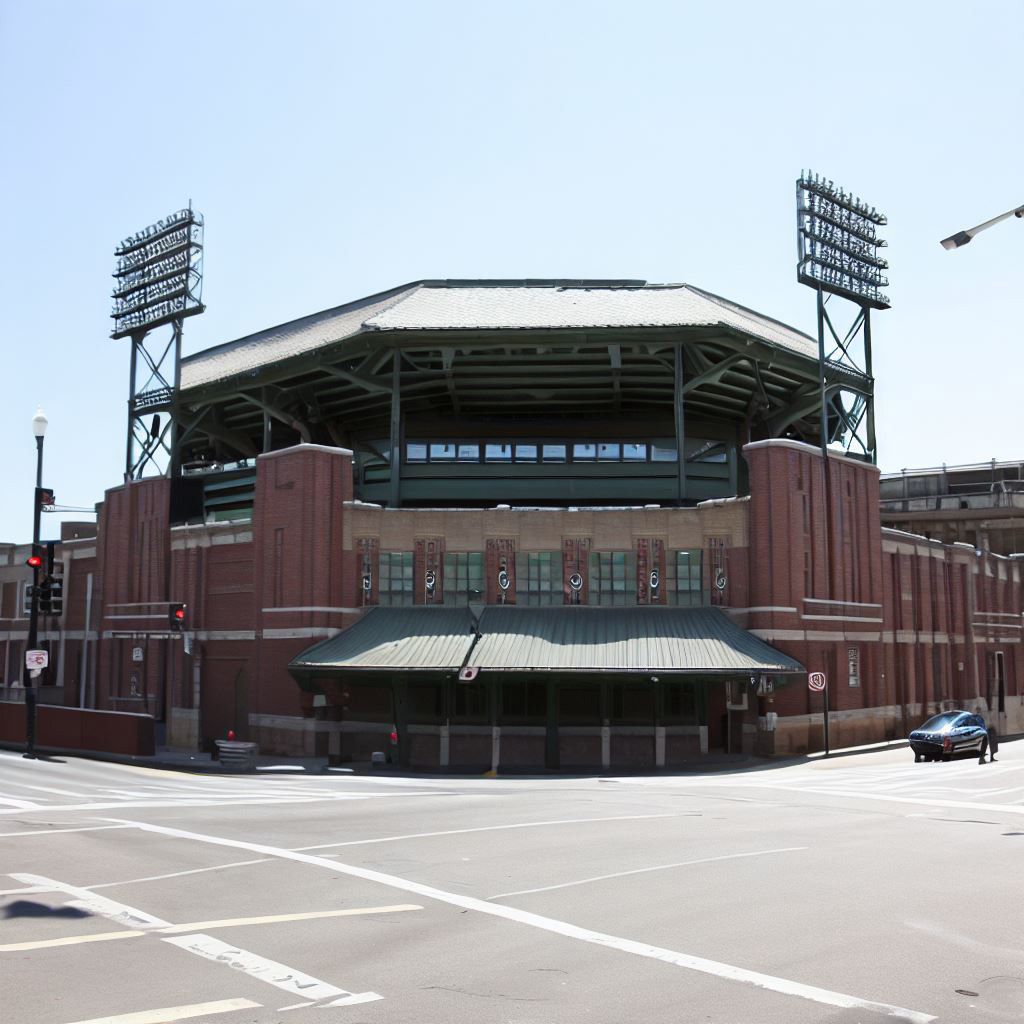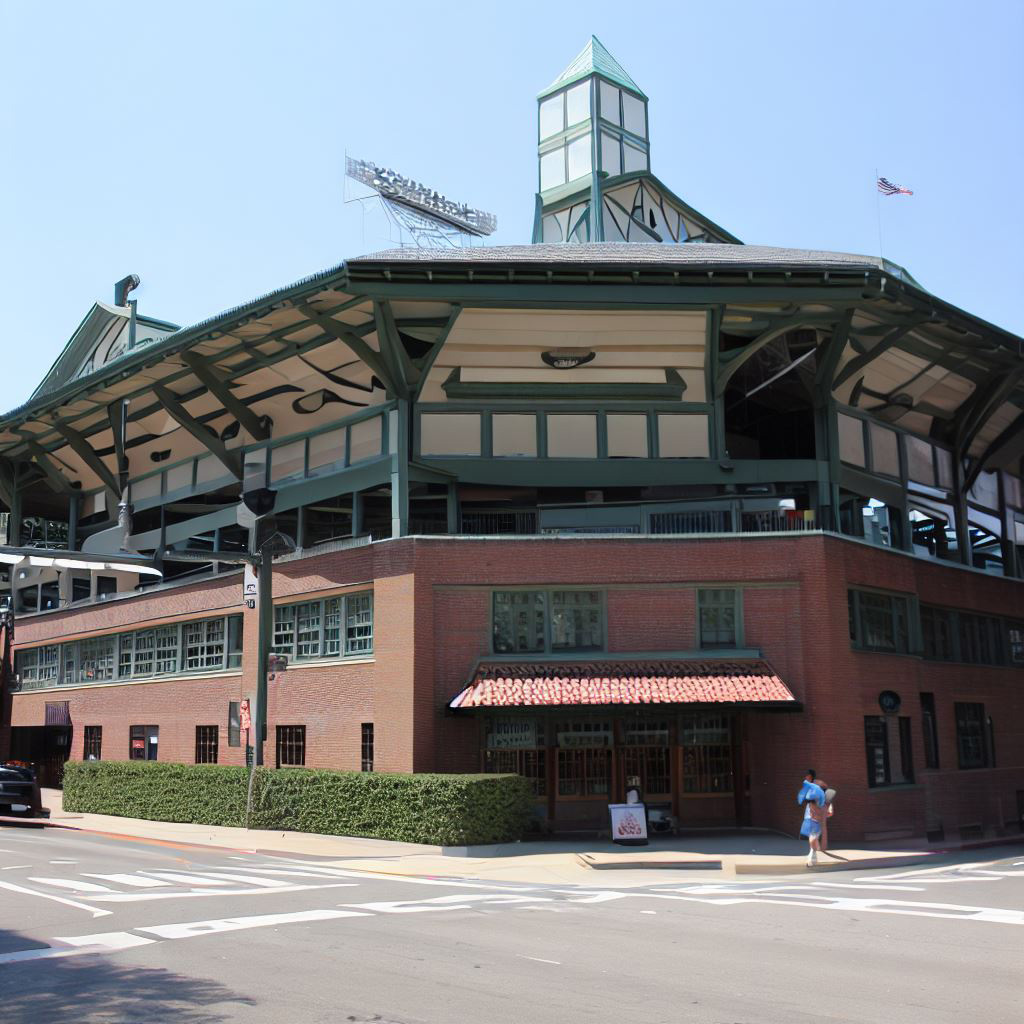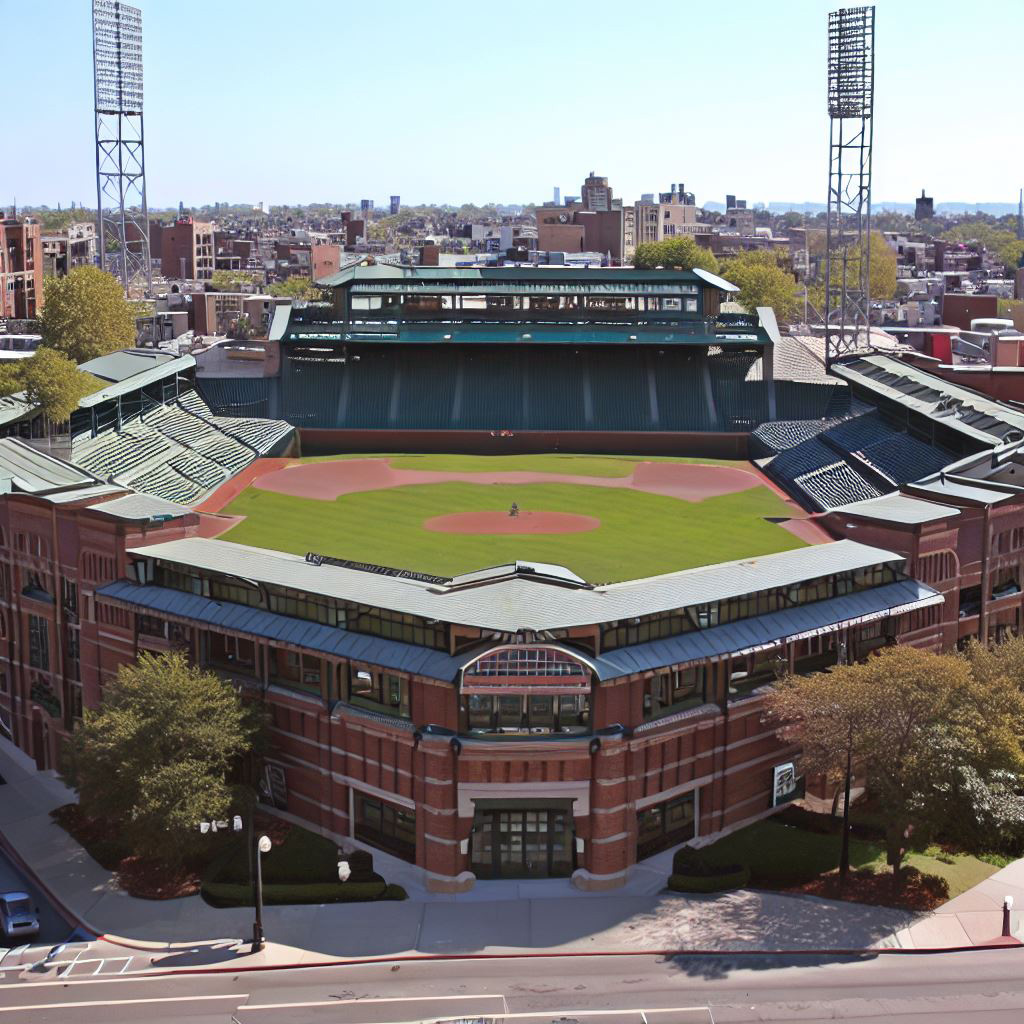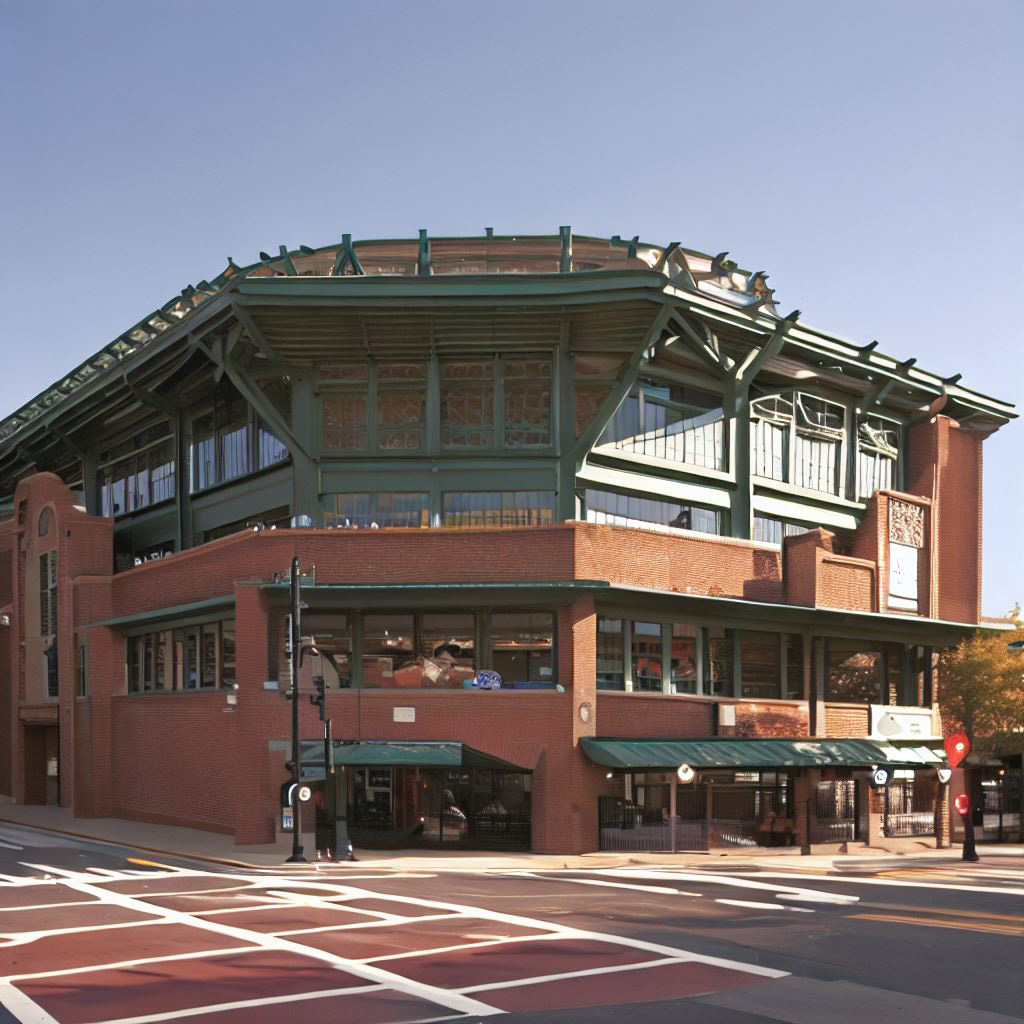
There are plenty of debates about the future impact of Artificial Intelligence (AI), but one positive is that the technology can bring to life some intriguing alternatives. Here, we ran some interesting scenarios through an AI generator regarding ballparks and distinctive architects: What if Frank Lloyd Wright designed Wrigley Field?
We have some amazing, visionary architects and designers working in the sports industry these days. It’s been a specialized field since Zachary Taylor Davis first presented the plans for White Sox Park–later Comiskey Park–to Charlie Comiskey, following up with designs for Weeghman Park (later Wrigley Field) and Los Angeles’ Wrigley Field. While he did plenty of other work on government building and packing plants, he’s best known these days as the industry’s first major architect/designer, the first of many in baseball, names that include Joe Spear, Earl Santee and Janet Marie Smith.
And some high-profile architects and designers have tackled ballpark projects: The firm of Cass Gilbert, who designed the iconic Woolworth Tower in New York City, once engineered a ballpark for the St. Paul Saints; Robert A.M. Stern worked on the 1996 renovation of Angel Stadium; Edward Durrell Stone contributed the famous roofline–the 96-arch “Crown of Arches”–and other elements to Busch Stadium II; and both Norman Bel Geddes and R. Buckminster Fuller took shots at a domed Brooklyn Dodgers ballpark.
There is a level of global architect, however, whose body of work transcends a genre and changes the entire architecture world. Today they might be called starchitects; in the past they were just famous architects. Zachary Taylor Davis was a Chicago architect at a time when Chicago architecture was changing the world. During his formative years he served as an apprentice to the visionary Louis Sullivan, dubbed the city’s “Father of Skyscrapers,” whose motto–“form follows function”–guided a generation of architects during the birth of modernism.
Ending a stint as a Sullivan apprentice when Davis joined the Dankmar Adler and Louis Sullivan firm: Frank Lloyd Wright, who took Sullivan’s lessons and created what he called organic architecture and the Prairie School. Wright is widely regarded as America’s greatest architect; he was certainly the first famous architect in popular culture terms. His designs are distinctive, ranging from lovely Usonian houses to grand homes like Fallingwater to bold urban designs like Broadacre City to entire college campuses like Florida Southern. It’s hard to miss the distinctive styling and feel of a Frank Lloyd Wright building. He never designed a sporting facility, though his archives contain an unrealized rendering for a new Belmont Park grandstand, dated 1956.
With that in mind, enter AI.
We used Microsoft Bing Image Creator–powered by the DALL·E 3 ChatGPT AI engine–to generate images of what Wrigley Field would look like if designed by Frank Lloyd Wright in our first of a “what-of” series of what notable ballparks would look like if designed by star architects of the part. (We already know what a starchitect would design today: remember, Bjarke Ingels Group–BIG–did the conceptual designs for a Howard Terminal waterfront ballpark proposed by the Oakland A’s.) Wright began his career in Chicago, so it’s not a total stretch.
Here are the renderings generated by Bing:



These renderings look to have capture the basic feel of Wrigley Field and inserted some standard Wright design elements.
These renderings are not to be taken literally, and other AI tools will provide different visions of a Frank Lloyd Wright-designed Wrigley Field. (Indeed: one simulation yielded a ballpark roughly double the size of Wrigley Field that was reminiscent of the Guggenheim Museum in New York City.) But these are fascinating, nevertheless, and we’re excited to launch this series. Next up: Paul Rudolph in Texas.
